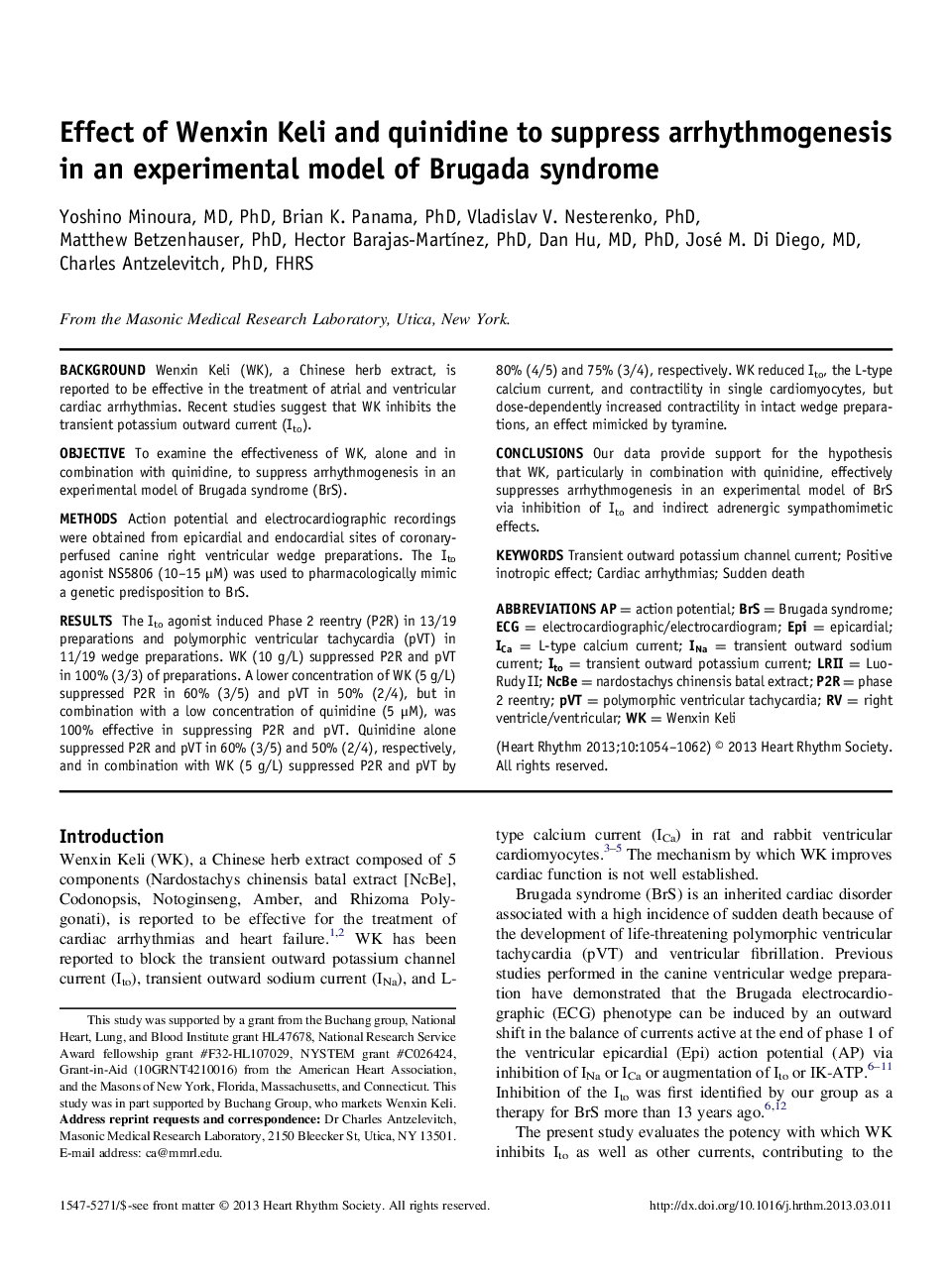| Article ID | Journal | Published Year | Pages | File Type |
|---|---|---|---|---|
| 2922278 | Heart Rhythm | 2013 | 9 Pages |
BackgroundWenxin Keli (WK), a Chinese herb extract, is reported to be effective in the treatment of atrial and ventricular cardiac arrhythmias. Recent studies suggest that WK inhibits the transient potassium outward current (Ito).ObjectiveTo examine the effectiveness of WK, alone and in combination with quinidine, to suppress arrhythmogenesis in an experimental model of Brugada syndrome (BrS).MethodsAction potential and electrocardiographic recordings were obtained from epicardial and endocardial sites of coronary-perfused canine right ventricular wedge preparations. The Ito agonist NS5806 (10–15 μM) was used to pharmacologically mimic a genetic predisposition to BrS.ResultsThe Ito agonist induced Phase 2 reentry (P2R) in 13/19 preparations and polymorphic ventricular tachycardia (pVT) in 11/19 wedge preparations. WK (10 g/L) suppressed P2R and pVT in 100% (3/3) of preparations. A lower concentration of WK (5 g/L) suppressed P2R in 60% (3/5) and pVT in 50% (2/4), but in combination with a low concentration of quinidine (5 μM), was 100% effective in suppressing P2R and pVT. Quinidine alone suppressed P2R and pVT in 60% (3/5) and 50% (2/4), respectively, and in combination with WK (5 g/L) suppressed P2R and pVT by 80% (4/5) and 75% (3/4), respectively. WK reduced Ito, the L-type calcium current, and contractility in single cardiomyocytes, but dose-dependently increased contractility in intact wedge preparations, an effect mimicked by tyramine.ConclusionsOur data provide support for the hypothesis that WK, particularly in combination with quinidine, effectively suppresses arrhythmogenesis in an experimental model of BrS via inhibition of Ito and indirect adrenergic sympathomimetic effects.
